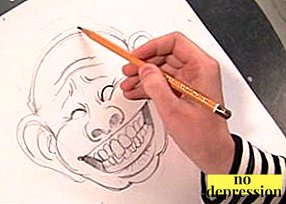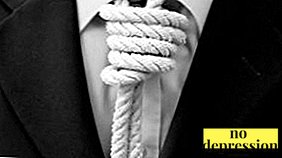There are a number ways to create new images with the help of imagination.
Such methods are called in psychology techniques of the imagination, and examples of their use can be found. in a variety of artwork: in the mythology of different nations, fairy tales, works of famous writers.
Basic concepts

Imagination - a tool not only a creative person.
It is valuable for the representative of any profession, because it allows you to think creatively and go beyond the standard concepts.
Fantasy makes it possible not only to create from scratch, but also to provide images and schemes in the process of reading scientific and fiction literature without any mistakes, to solve tasks directly connected with the involvement of visual figurative thinking, to plan further activities, to memorize information more efficiently.
Active (that which works arbitrarily) imagination is divided into:
- Recreative. This is the ability of a person to recreate in his head the images, models, schemes based on the description, which is usually presented either orally or in writing.
For example, recreating imagination is actively involved in reading artistic books: the reader has a detailed understanding of the characters, the environment, actions, intonations, and so on.
- Creative. This is the ability to create original images, concepts, schemes. Of course, any creative person relies on already existing concepts, rules, ideas, creating something of his own, but at the same time the product of his fantasy will differ in one way or another from everything that existed before.
Receptions or, in other words, operations of imagination directly associated with creative imagination.

Creative imagination largely works on the basis of the analysis-synthesis scheme: first, images that exist in a person’s memory are analyzed, their characteristics and interrelationships are determined; after that, the splitting process takes place in order to construct something new from the material obtained.
Imagination operations - these are the methods by which fantasy carries out the process of analysis and synthesis.
Basic operations of imagination - it is agglutination, hyperbolization, addition, typification, accentuation, transfer, analogy.
Receptions
What refers to the tricks of the imagination?
Agglutination
Agglutination is an operation in which elements belonging to different phenomena or objects are combined, so that something new is obtained.
This technique can often be found in mythology, fairy tales and legends of various nations of the world, in works of art written in the genres of fantasy and fiction.
Examples of agglutination:
- Sea Maiden Traditionally, sea maidens are attractive girls who have a tail, similar to a fish one, that exists in European mythology. In Russian, they are usually called mermaids, despite the fact that classic mermaids taken from Slavic mythology have no tail.
- Sphinx. This mythical creature became quite famous, and many nations depicted it in different ways. The most famous image of the sphinx is the creation with the body of a lion and a human head.
- Centaur. The famous mythical creature is half human, half horse, migrated from myths to many famous fantasy universes, for example into the Harry Potter universe.
- A hut on chicken legs. The ominous attribute of many Russian folk tales: a hut, standing on strong legs (two or four), resembling chicken, often able to move with their help and behaving as a relatively intelligent creature.
- Animals from the popular animated series Avatar: The Legend of Aange and Avatar: The Legend of Korr. In the fantasy universe of these animated series there are a huge number of animals created with the help of the “agglutination” technique: krotobarsuki, lions-turtles, krolguru (rabbit and kangaroo), turtles, platypus bears and many others.
- Hippogriff from the series of books and films about Harry Potter. According to the description in the books, the hippogriff is a large animal, which is a mixture of a horse (torso, tail and hind limbs) and an eagle (head, wings and forelegs). May have a different color.

From the Latin language the word "agglutination" is translated as "gluing". This term is used not only in psychology, but also in biology and linguistics, and has different meanings.
Hyperbolization

Hyperbolization - a phenomenon or being is intentionally depicted as being larger or smaller in order for its image to work in the context of the story being told, to create certain emotions, and to look more or less significant against the background of others.
It can also be increased or reduced the number of elements that are part of the object.
This technique is also common. in mythology, in fairy tales, in a fantasy or fantasy setting.
Examples:
- Thumbelina. The tiny size of a girl from Andersen’s fairy tale made it possible to realize the plot that was presented (interaction with small animals and insects as equals), and to emphasize her vulnerability.
- Dragon with a few heads. In many stories and tales, dragons have more than one head: usually three, or seven, or twelve. Since dragons traditionally appear in fiction as negative characters that need to be defeated, the number of heads underlines the danger from them and makes it difficult for the protagonist to fight.
- Many-armed Indian gods. Many Indian deities are depicted with many hands. Their hands symbolize their power and ability to do many things at the same time. In some cases, philosophical overtones are attributed to additional hands.
Other examples may also serve as examples, such as the god Janus, who has two faces, or the Cyclops, which has only one eye.
Bargaining

Bargaining - some object (often a material object) add characteristics that are not the norm for him in everyday life.
Examples of the use of such an operation can also be easily found in many fantasy works of art.
Examples:
- Invisible hat. Makes the one who wears it completely invisible. The invisibility mantle from the Harry Potter book series has a similar skill.
- Tablecloth A special tablecloth that can materialize an unlimited amount of delicious and varied food, you just need to spread it out and say the magic words.
- Magic wand. In earlier works of art such sticks simply fulfilled the desire of the owner with a wave. For example, in the Harry Potter series, the magic wand became an instrument that released the power of a wizard.
Similar skills have staves of magicians, which appear in many fantasy universes.
Other examples: seven-foot boots, a flying carpet.
Typing

Typing - a technique in which the characteristics of similar objects, phenomena, people belonging to the same group are collected, and are used to create a unique image that is a display of a certain reality.
Typification is common in many works of classical literature: Some well-known characters are a collection of such features that reflect the problems and the essence of certain groups of the population, becoming the mirror of their age, era.
Examples:
- Faust;
- Eugene Onegin;
- Mitrofanushka from the play “Underblown” by DI Fonvizin;
- Landowners from the work “Dead Souls” by Gogol (Korobochka, Manilov, Nozdrev).
Emphasis
Emphasis - a technique in which the individual characteristics of a character or other creature is emphasized, often excessive, necessary for ridicule or greater expressiveness.
Examples:
- Cartoons. This type of art is aimed at ridiculing various phenomena, ideas, personalities, historical events, the vices of society, often in rude form, using black humor and stereotypes.
 Cartoonists focus on those features that seek to ridicule. For example, a talker can be a long tongue.
Cartoonists focus on those features that seek to ridicule. For example, a talker can be a long tongue. - Caricatures This kind of art has a direct connection with the caricature, but does not make fun of anything, it only focuses attention on the external features of a person or animal. Usually, a cartoon is a recognizable portrait in a playful style, which implausibly exaggerates individual features of an object. Caricatures cause a smile, gallant laughter from those who look at them.
Transfer
Transfer (or moving) - a technique in which a creature or other object is placed in non-standard conditions in which it should not have fallen.
As an example, characters that in the fan environment they call them popadans: this is either unusual, fairytale heroes who fall into our world and adapt to life in it, or ordinary people, by chance, got into a fantastic or fantasy universe.
Examples of famous snaps:
- Old Man Hottabych. The story of the ancient gin, who fell into Soviet realities and met the boy Volka, is known to most of those who were born in the nineties and earlier.
- Children from the Narnia Seriescreated by Clive Lewis. Classic fantasy, located next to the works of Tolkien.

It also makes sense to recall Alice, who fell into Wonderland, Dorothy (who became Elly in Volkov’s adaptation) and many others.
To move can be attributed the very idea of zoos: animals are in non-standard conditions for themselves.
Analogy
Analogy - the original image is created on the basis of something that is already present in reality and has the necessary abilities.
Examples:
- Aircraft and other devices intended for flight were created on the basis of observations of birds and animals that are planned with the help of wings (flying squirrels).
- Analogue for radar locators are the mouth and ears of bats with which they navigate.
Communication of imagination

The operations of the imagination are closely interrelated and function as a complete structure.
When a person creates something with his own fantasy, he uses many tricks, and this happens almost always unconsciously.
The more knowledge and experience a person has, the it is easier for him to create new images in your own imagination.
About the tricks of the creative imagination in this video:

 Cartoonists focus on those features that seek to ridicule. For example, a talker can be a long tongue.
Cartoonists focus on those features that seek to ridicule. For example, a talker can be a long tongue.

